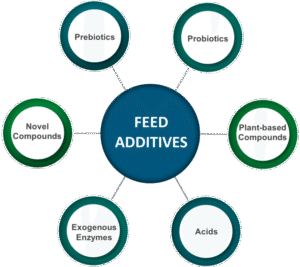Improving the nutritional quality of low-quality roughages involves various strategies aimed at enhancing their digestibility, protein content, energy value, and overall nutritional value for livestock. Here are some effective methods for improving the nutritional quality of low-quality roughages:
Thank you for reading. Don't forget to subscribe & share!
1. Physical Processing:
Chopping or Grinding: Breaking down roughages into smaller particle sizes increases their surface area, facilitating microbial action and enzymatic digestion in the rumen, which improves digestibility.
Pelleting or Cubing: Pelleting or cubing roughages can enhance their palatability, reduce sorting by livestock, and improve nutrient intake and digestibility.
2. Chemical Treatments:
Ammoniation: Treating low-quality roughages with anhydrous ammonia or urea can increase crude protein content and digestibility by breaking down lignin and other indigestible components.
Alkali Treatment: Treating roughages with alkaline agents like sodium hydroxide (NaOH) or calcium hydroxide (Ca(OH)₂) can improve digestibility and reduce fiber content by breaking down cell wall components.
Enzyme Supplementation: Adding exogenous enzymes (e.g., cellulase, hemicellulase) to roughages can enhance fiber degradation and nutrient release in the rumen, improving digestibility and feed efficiency.
3. Biological Treatments:
Silage Production: Fermentation of low-quality roughages into silage under anaerobic conditions can improve their digestibility, palatability, and nutrient preservation, particularly protein.
Inoculation: Inoculating roughages with specific microbial strains (e.g., lactic acid bacteria) can accelerate fermentation, reduce spoilage, and enhance nutrient preservation and digestibility.
4. Supplementation:
Protein Supplementation: Supplementing low-quality roughages with high-protein feedstuffs (e.g., soybean meal, cottonseed meal) can increase overall protein content and balance amino acid profiles, improving nutritional quality.
Energy Supplementation: Providing energy supplements (e.g., grains, molasses) alongside roughages can enhance energy density, microbial fermentation, and overall digestibility.
5. Nutrient Enrichment:
Mineral and Vitamin Supplementation: Adding mineral and vitamin supplements to roughages can address nutrient deficiencies and optimize overall nutritional balance for livestock.
Probiotics and Prebiotics: Supplementing roughages with probiotics (beneficial microorganisms) and prebiotics (substrates for beneficial microorganisms) can promote a healthy rumen environment, enhance fiber digestion, and improve nutrient utilization.
6. Quality Assessment and Management:
Testing: Regularly assessing the nutritional composition of roughages through laboratory analysis helps identify nutrient deficiencies and informs supplementation strategies.
Storage: Proper storage practices, such as avoiding exposure to moisture and minimizing exposure to air, sunlight, and pests, help maintain the nutritional quality of roughages over time.
7. Balancing Rations:
Feed Formulation: Balancing rations by combining roughages with other high-quality feedstuffs to meet the specific nutrient requirements of livestock helps optimize overall diet quality and performance.
By implementing these strategies, the nutritional quality of low-quality roughages can be significantly enhanced, making them more suitable and beneficial for livestock feeding. It’s essential to consider the specific characteristics of roughages, the nutritional requirements of livestock, and economic feasibility when selecting and applying these improvement methods.









